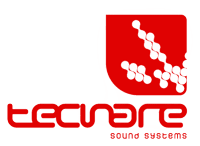Explore the World of Pro Audio
Fourier Analysis Applied to Audio: Time-Frequency Domain
Fourier analysis is a fundamental mathematical tool in signal processing, enabling the decomposition of a time-domain signal into its frequency components. In the context of audio, this analysis is essential for tasks such as compression, filtering, synthesis, and pattern recognition. However, since audio signals are dynamic and vary over time, classical Fourier analysis (based on the Fourier Transform) is insufficient, as it only provides frequency-domain information without considering temporal evolution.
To address this issue, time-frequency analysis techniques are used, which allow studying how the spectral content of an audio signal changes over time. Among these techniques, the most notable are:
-
Short-Time Fourier Transform (STFT)
-
Wavelet Transform (WT)
-
Time-Frequency Energy Distributions (e.g., Spectrogram, Wigner-Ville)
This document explores Fourier analysis applied to audio in detail, with a focus on the STFT and its representation via spectrograms.


